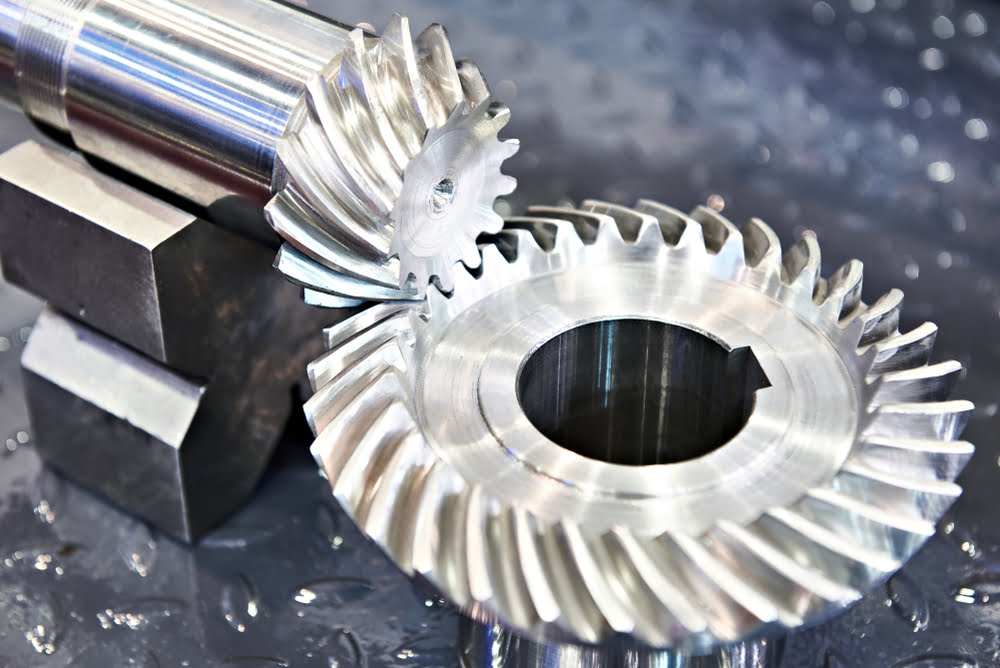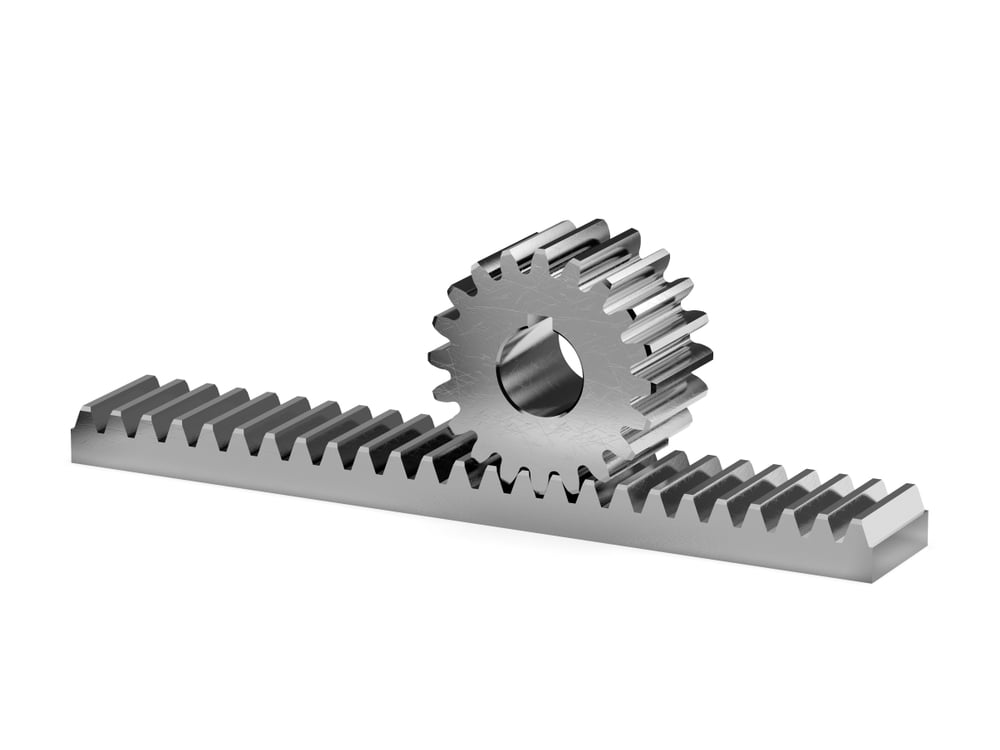
Gears are one of the most common, useful, and varied tools in machines. Simply speaking, gears are utilized to transfer motion between separate components. Depending on the unique characteristics of a gear, various kinds of motion and torque will be produced. Gears mesh together via carefully produced teeth. Most often, gears are mounted to a shaft.
Because gears are the building blocks of motion and torque, dozens of varieties have been created with unique advantages. For example, gears created for transmissions may not be optimized for another piece of machinery.
What type of gear do you need for your project? If you are unsure, this blog is a great place to start! In the content below, we discuss three characteristics that differentiate gears, then dive into a list of gear types.
Gear Characteristics
Before diving into gear varieties, it is important to outline a few important characteristics that define each gear.
Gear Shapes
Gear shape seems rather self-explanatory at first consideration. Most gears are circular, right? While that is true, gears can be found in numerous shapes, including elliptical and triangular. Various shapes are designed for unique purposes. For example, circular gears produce consistent gear ratios – the output and input ratios are the same. If your project requires consistent torque, a circular gear is the best option.
On the other hand, uniquely shaped gears produce variable torque ratios. One industry resource writes: “Variable speed and torque enable non-circular gears to fulfill special or irregular motion requirements, such as alternatingly increasing and decreasing output speed, multi-speed, and reversing motion.”
Shape radically impacts gear functionality.
Gear Teeth
While in use, gear teeth interlock. Gear teeth are designed and constructed with unique characteristics.
For example, some gears are designed with teeth built into the gear body, while others are designed with inserted teeth that can be replaced as needed. Additionally, gear teeth may be added inside or outside the gear body. This is referred to as “internal” or “external” tooth placement. While one is not better than the other, internal vs external tooth placement will impact the motion of the gear. Finally, the tooth profile – or the shape of the teeth – will impact and influence the gear’s functioning characteristics, like speed and friction. Involute, trochoid, and cycloid are three of the most common tooth profiles.
Beyond design, gears can be acquired with various numbers of teeth and tooth angles. The customization capability of gear teeth is extensive.
Gear Configurations
There are three gear axes configurations: parallel, intersecting, and non-parallel/ non-intersecting.
Gears with parallel axes resided parallel to each other, one shaft rotating in the opposite direction of the other. Gears with intersecting axes intersect on the same plan. Non-parallel/ non-intersecting gears, such as screw gears, have axes that cross on differing planes. This configuration is not as efficient or fast as the other two.
Different Types of Gears
The following list will be explored utilizing the gear characteristic terminology discussed above.
Spur Gear

Spur gears often operate on parallel shafts. Additionally, this gear runs with a single line of contact between teeth, meaning only one tooth is in contact with another at any given time. Single contact makes spur gears noisier than their similar counterparts, such as the helical gear. Regardless, spur gears are the most common type of gear because of their simplicity and precision.
Helical Gear

Helical gears are designed similarly to spur gears and can be used to drive parallel axes or non-parallel/ non-intersecting shafts. Additionally, helical teeth are oriented at an angle, causing multiple teeth to be in contact with another at any given time. This produces a quieter, smoother operation.
Bevel Gear

Bevel gears operate on intersecting axes, specifically at 90 degrees. Like helical gears, bevel gear teeth are designed at an angle, causing multiple teeth to be in contact at once. All bevel gears are cone-shaped, but a variety of different bevel gears can be acquired, including: spiral bevel gears, straight bevel gears, and crown bevel gears.
Screw Gear
Screw gears resemble bevel gears. However, screw gears operate with a 45 degree twist angle on non-parallel/ non-intersecting shafts. Though important for specific circumstances, screw gears do not have an extensive load carrying capacity.
Worm Gear

Worm gears are found in pairs, often comprised of a screw-shaped gear and a circular gear. Worm gears operate smoothly and quietly and produced large amounts of friction. Finally, they are used solely for non-parallel/ non-intersecting axis configurations and ideal for high-shock load applications.
Rack and Pinion Gear

Rack and pinion gears are also found in pairs, comprised of a cylindrical gear and a gear rack. They are used for parallel axes configurations. Due to their design, rack and pinion gears produce high friction and stress.
Hypoid Gear
Visually, hypoid gears resemble bevel gears. Unlike bevel gears, they operate on non-intersecting shafts.
Gears vs Sprockets
Gears and sprockets are both mechanical components used to transfer rotational motion between shafts, but they have distinct differences. Gears are circular toothed wheels that mesh with other gears, mainly used in gear trains for precise speed and torque ratios in various machinery. On the other hand, sprockets have teeth around their edge, engaging with a chain to transmit power in chain-driven systems like bicycles and conveyor belts. Gears have involute teeth for smooth motion transfer, while sprockets have smaller teeth optimized for chain engagement. Overall, gears focus on precise motion transmission, while sprockets excel in power transfer over longer distances through chains.
Illinois Pulley & Gear: Pulley Stock Manufacturers
At Illinois Pulley & Gear, we manufacture an extensive variety of high-quality timing pulley stock. Our stock is made on-demand, customized to the precise specifications of the customer. Pick your material, tooth profile, and the number of teeth, and we will produce the stock.
If you are unsure of the precise gear you need, we would love to answer your questions and guide you in the right direction. Feel free to get in touch with our team of experts at 847-407-9595 or via our online contact form.
